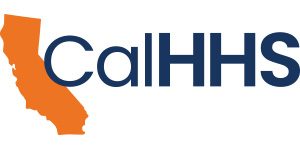SACRAMENTO – California Department of Public Health (CDPH) Director and State Public Health Officer Dr. Karen Smith today advised residents of recent burn areas to use caution in cleaning up ash from wildfires. The ash from trees burned in forest fires is relatively nontoxic and similar to ash that might be found in your fireplace. However, ash from burned buildings, vehicles, and similar items may contain many toxic substances, including arsenic, asbestos, lead, and fine particles that can aggravate asthma and other respiratory problems.
“As evacuation orders begin to be lifted, residents should be aware of potential health hazards during the clean-up and rebuilding process,” said Dr. Smith. “It is important to limit the amount of ash that gets airborne. Leaf blowers and sweeping may seem like the smart way to clean it up, but this actually stirs the ash up so people may breathe it in, which is dangerous. It’s also important to avoid skin contact with ash.”
In order to avoid potential health risks, CDPH recommends these safety tips for cleaning up ash:
- Never use a leaf blower, as it will spread the ash and blow it back into the air.
- Wear a close-fitting respirator that is rated N-95 or P-100 to block ash particles from being inhaled. Bandanas, surgical or cloth masks do not effectively block fine particles.
- Wear gloves, long sleeved shirts, long pants, socks, and shoes to avoid skin contact with ash.
- If you do get ash on your skin, wash it off as soon as possible.
- Remove shoes before entering your home or use “sticky mats” in entryways and doors to remove dust and ash from your shoes. Sticky mats are sold at hardware stores.
- Do not allow children to play in ash. Wash ash off toys before children play with them.
- Clean ash off pets with either a damp cloth or bath.
- If you have a vegetable garden or fruit trees, wash the fruits or vegetables before eating them.
- The use of shop vacuums and other non-HEPA filter vacuums is not recommended. HEPA filter vacuums could be used, if available.
“People should seek medical care if they experience health issues such as chest pain, chest tightness or shortness of breath. It’s also important to pay close attention to children and the health and emotional impacts they may be experiencing,” said Dr. Smith.
More information can be found on CDPH’s Be Prepared California website, the California Department of Toxic Substances Control’s website and the California Environmental Protection Agency’s Fire Response and Recovery website.
For the latest information on the fires, visit California Department of Forestry and Fire Protection’s website.

